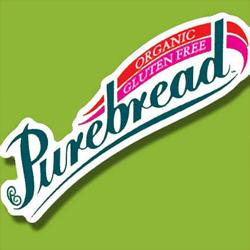Kapiti-based Purebread highlights the link between the importance of Digestion and a Healthy Gut with organic ingredients

Master bread maker and owner of Kapiti Based Purebread, Robert Glensor offers his homemade bread recipe that will aid digestion and promote a healthy gut using organic ingredients.
“Ever had that ‘ooh I feel bloated feeling after eating a sandwich? Wheat and grains in general are not at all digestible in their raw form to our human stomachs,” says Robert Glensor.
“Putting grains through the age old ‘slow’ production process as in sourdough starters or natural fermentation methods changes its chemical structure. You will even feel the difference of the dough when just mixed compared to after fermented (risen overnight or day in a warm place),” says Robert. This rising process allows the natural enzymes to get working, breaking down the complex carbohydrates, which ensures easier digestion.
“It stands to reason, that if we improve digestion, we improve the uptake of the many valuable vitamins and minerals present in the organic ingredients used to produce Purebread and the like,” states Robert.
The other benefit to this is that it uses much less yeast. These two very important differences result in Optimum Nutrition from bread with very available energy value for our busy lifestyles.
“It is my personal opinion that much of the gluten intolerance many are experiencing is partly caused by the ‘modern’ and very fast methods of bread baking. In effect by not being that digestible, it has damaged our gut causing the sensitivity. Initially this was to wheat but now has been narrower down to gluten,” stated Robert Glensor, founder of Purebread
Sue Kedgley also spoke about this issue: “It’s interesting that until the 1950s coeliac disease was extremely rare. But from the 1960s it began to increase sharply. It’s around that time that the new mechanical methods of bread-making, called the Chorleywood Bread process or ‘no time’ method, were introduced in the United Kingdom and were taken up by other countries like the United States, Australia and New Zealand.”
“Certainly countries who maintain the ‘old ways’ of natural fermentation or sourdough bread making have much less cases of gluten intolerances,” adds Robert.
Bob’s Organic Bread Recipe
For one large loaf at 1kg or two small loaves
Use quality organic ingredients where possible for optimum nutrition.
Being organic is mostly about what is not in the ingredient, as in no artificial chemicals and pesticides which are now, very common in grain grown non-organically.
- 600mls or 2 Cups of luke warm water
- 1 Dessertspoon Honey
- 1 Teaspoon Dried Yeast (Without Improvers)
- 90grams or 0.75 Cups of Rolled Oats
- 300 grams or 1.5 Cups Whole-meal Flour
- 300 grams or 1.5 Cups White Flour
- 1 Level Dessertspoon Sea Salt or Table salt
- (Later after first rise 8-12 hours later) 1 Tablespoon Coconut, Olive or Vegetable oil (not Canola or Soy as probably from GE crop. W.H.O have just stated that roundup used on GE crops is probably cacogenic) “It DOES get in and we eat it”
Dissolve honey in most of the water in large bowl or bucket. Add rolled oats and yeast and leave for 5 minutes for the yeast to start activating (bubbles).
Add flours and salt and mix very well. Add the rest of the water to a (sloppy mud consistency). It is very wet to start as classed as a batter dough.
Cover and leave to rise either overnight or through the day. Almost the longer the better so don’t worry about it. It should double in size and wait till you return whilst the natural enzyme magic of easier digestibility evolves.
Much, much later 8-12 hours so overnight or through day.
Oil or butter your tins and then fold in the tablespoon of oil to your naturally fermented dough. (you will feel the difference to earlier)
Turn dough into oiled tins to no more than half full.
Leave to rise and when nearly double in size, @ 30-50 minutes, place into middle of pre heated oven @ 180ºC. A warmer place will speed it up
One loaf will take about 50 minutes and two smaller @ 40 minutes or until well browned. A hollow sound and feel when tapped confirms it is well baked.
Turn out of tins and leave to cool on rack or eat HOT.
“The SECRET of Purebread is OUT! Enjoy the process and the product!,” adds Robert.
